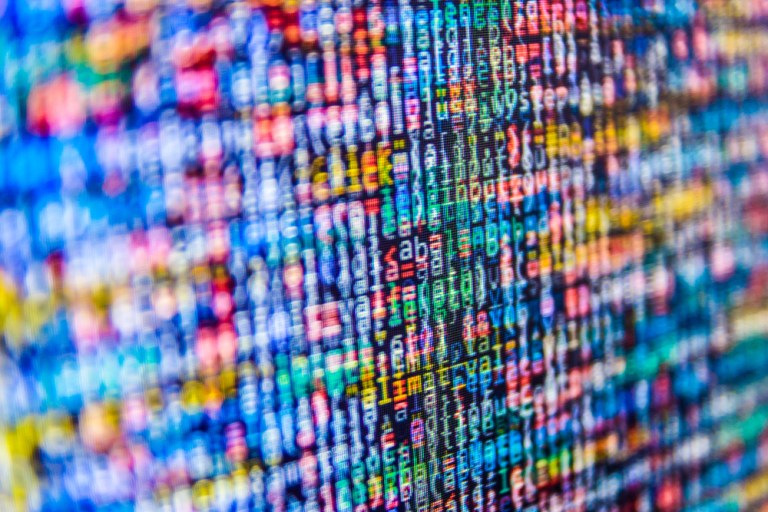
The term “Internet of Things” has become a big buzzword in business lately, but what exactly is it and why might it shape the future of the retail industry?
Simply put, think of the Internet of Things as an “interconnected ecosystem of internet-enabled objects,” according to eMarketer. So, things like your mobile device and tablet are part of the Internet of Things. But then, so are the sensors that collect data for Tesla’s automated driving vehicle and so are the microprocessors, networks, data hubs and analytics programs that analyze that data.
Even artificial intelligence software that can be used to streamline and look for patterns in that sea of data constantly being collected by devices, sensors and everything else that makes up the Internet of Things (i.e., the Things) is a part of the Internet of Things.
It’s all connected in a way, and the Internet of Things is all about collecting as much of that data as possible — we’re talking Big Data here — and breaking it down to better understand customers wants, needs and spending habits.
It also offers tons of opportunities for retailers who know how to take advantage of it.
Synchrony Financial, a consumer financing firm, listed the Internet of Things as number six on its list of top retail trends for 2016 and advised retailers to “leverage the data collected through connected devices to their best sales advantage.”
“It used to be that retailers collected most of their consumer data at the point of sale. But the rapidly expanding Internet of Things (IoT) is changing that. Today, retailers are deploying and connecting millions of low-cost microdevices and sensors (“Things”) just about everywhere in the retail environment,” according to Synchrony Financial. “The payoff: more data collected in more places, providing rich and invaluable insights into consumer behavior, market trends, buying patterns, customer engagement and the like. IoT also helps retailers bring forth new revenue streams with new products and services. It can also lead to cost savings through productivity improvements.”
EMarketer believes that the Internet of Things is “delivering many new opportunities for retailers” and conducted a study on worldwide retailers with above-average sales growth in Aug. 2015. Forty-two percent of retailers surveyed in that study said they strongly agreed that the Internet of Things would “drastically change the way companies do business” over the next three years, while 38 percent of retailers also agreed with that statement (another 16 percent were neutral).
“Whether it’s monitoring the supply chain, tracking and managing inventory, delivering personalized promotions or enabling eCommerce from new environments, the retail IoT is ushering an era in which ‘smart’ things can seamlessly collect, share and analyze real-time data,” according to eMarketer.
Juniper Research, a research firm that analyzes the digital and mobile tech sectors, estimates that, by 2020, retailers will be spending $2.5 billion on Internet of Things-related tech, such as beacons, radio frequency identification tags and other types of sensors. That’s nearly four times the amount retailers spent on that type of tech in 2015.
If you break it down in terms of the sheer number of total connected devices that will soon be part of the Internet of Things, that’s 38.5 billion devices by 2020, an increase of 285 percent since 2015 (when the number was 13.4 billion), according to Juniper Research.
The Internet of Things is “as effective as the sum of its parts,” according to Juniper Research. “Mere connections create data; however, this does not become information until it is gathered, analyzed and understood. The analytics back-end systems of the IoT will therefore form the backbone of its long-term success.”
A MarketsandMarkets report recently estimated that the total size of the retail aspect of the Internet of Things will grow from $14.28 billion in 2015 to $35.64 billion by 2020, which is more than 20 percent growth rate per year.
“The IoT movement offers retailers opportunities in three critical areas: customer experience, the supply chain and new channels and revenue streams. While the IoT may seem like science fiction, it is becoming reality faster than most of us can comprehend. Retailers that hesitate to develop and execute an IoT strategy will open the door for competitors — old and new alike — to swoop in and capture IoT mind share and market share,” according to an Accenture Strategy report entitled “The Internet of Things: Revolutionizing the Retail Industry.”
The Internet of Things is already happening. The data is out there and being collected on everything from consumers’ shopping history to favorite sports teams through social media. Now, whether you or your competitor will use that wide array of data to better attract new customers and keep existing customers happy is entirely up to you.